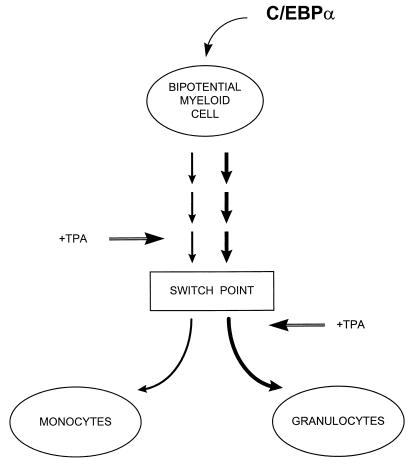FIG. 7.
Model of bipotential myeloid lineage differentiation. The expression of increased levels of C/EBPα in a bipotential myeloid precursor induces genetic changes over the course of a week that lead to irreversible granulocytic differentiation. Prior to this switch point, monocytic differentiation agents such as TPA can induce macrophage development, but subsequent to this point the same agents can accelerate granulocytic differentiation. After the switch point, C/EBPα silencing is required for the monocytic pathway to proceed, as forced expression of C/EBPα prevents monocytic differentiation. At present, the factors which direct monocytic maturation of the bipotential myeloid precursor cell are not clearly defined, but candidate genes include the egr-1 family (48) and/or PU.1 (30).

